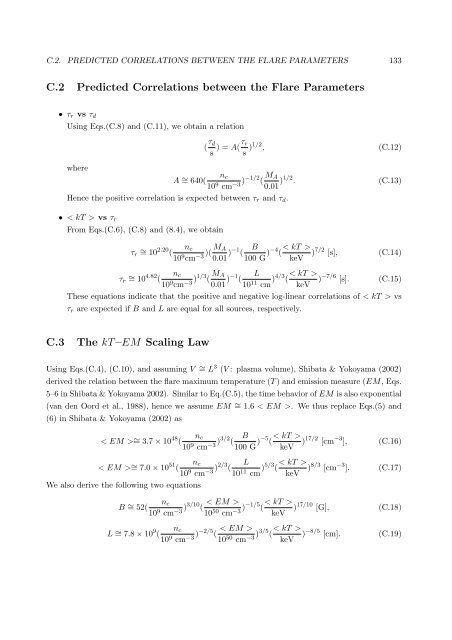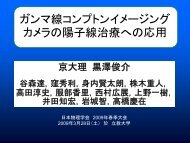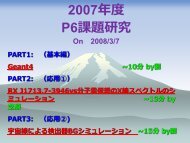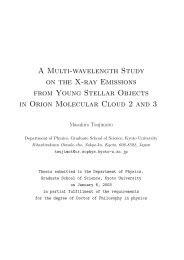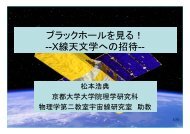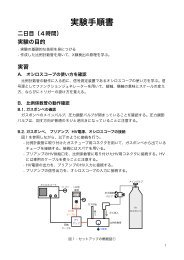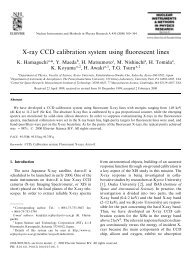X-ray Study of Low-mass Young Stellar Objects in the ρ Ophiuchi ...
X-ray Study of Low-mass Young Stellar Objects in the ρ Ophiuchi ...
X-ray Study of Low-mass Young Stellar Objects in the ρ Ophiuchi ...
Create successful ePaper yourself
Turn your PDF publications into a flip-book with our unique Google optimized e-Paper software.
C.2. PREDICTED CORRELATIONS BETWEEN THE FLARE PARAMETERS 133C.2 Predicted Correlations between <strong>the</strong> Flare Parameters• τ r vs τ dUs<strong>in</strong>g Eqs.(C.8) and (C.11), we obta<strong>in</strong> a relation( τ ds ) = A(τ rs )1/2 ,(C.12)wheren cA ∼ = 640(10 9 cm −3 )−1/2 ( M A0.01 )1/2 . (C.13)Hence <strong>the</strong> positive correlation is expected between τ r and τ d .• < kT > vs τ rFrom Eqs.(C.6), (C.8) and (8.4), we obta<strong>in</strong>τ r∼ = 10 2.20 n c(10 9 cm −3 )( M A B0.01 )−1 (100 G )−4 ( < kT >keV )7/2 [s], (C.14)τ r∼ = 10 4.82 n c(10 9 cm −3 )1/3 ( M A L0.01 )−1 (10 11 cm )4/3 ( < kT >keV )−7/6 [s]. (C.15)These equations <strong>in</strong>dicate that <strong>the</strong> positive and negative log-l<strong>in</strong>ear correlations <strong>of</strong> < kT > vsτ r are expected if B and L are equal for all sources, respectively.C.3 The kT –EM Scal<strong>in</strong>g LawUs<strong>in</strong>g Eqs.(C.4), (C.10), and assum<strong>in</strong>g V ∼ = L 3 (V : plasma volume), Shibata & Yokoyama (2002)derived <strong>the</strong> relation between <strong>the</strong> flare maximum temperature (T ) and emission measure (EM, Eqs.5–6 <strong>in</strong> Shibata & Yokoyama 2002). Similar to Eq.(C.5), <strong>the</strong> time behavior <strong>of</strong> EM is also exponential(van den Oord et al., 1988), hence we assume EM ∼ = 1.6 < EM >. We thus replace Eqs.(5) and(6) <strong>in</strong> Shibata & Yokoyama (2002) asn c< EM > ∼ = 3.7 × 10 48 B(10 9 cm −3 )3/2 (100 G )−5 ( < kT >keV )17/2 [cm −3 ], (C.16)n c< EM > ∼ = 7.0 × 10 51 L(10 9 cm −3 )2/3 (10 11 cm )5/3 ( < kT >keV )8/3 [cm −3 ]. (C.17)We also derive <strong>the</strong> follow<strong>in</strong>g two equationsB ∼ n c= 52(10 9 cm −3 )3/10 ( < EM >10 50 cm −3 )−1/5 ( < kT >keV )17/10 [G], (C.18)n cL ∼ = 7.8 × 10 9 (10 9 cm −3 )−2/5 ( < EM >10 50 cm −3 )3/5 ( < kT >keV )−8/5 [cm]. (C.19)


